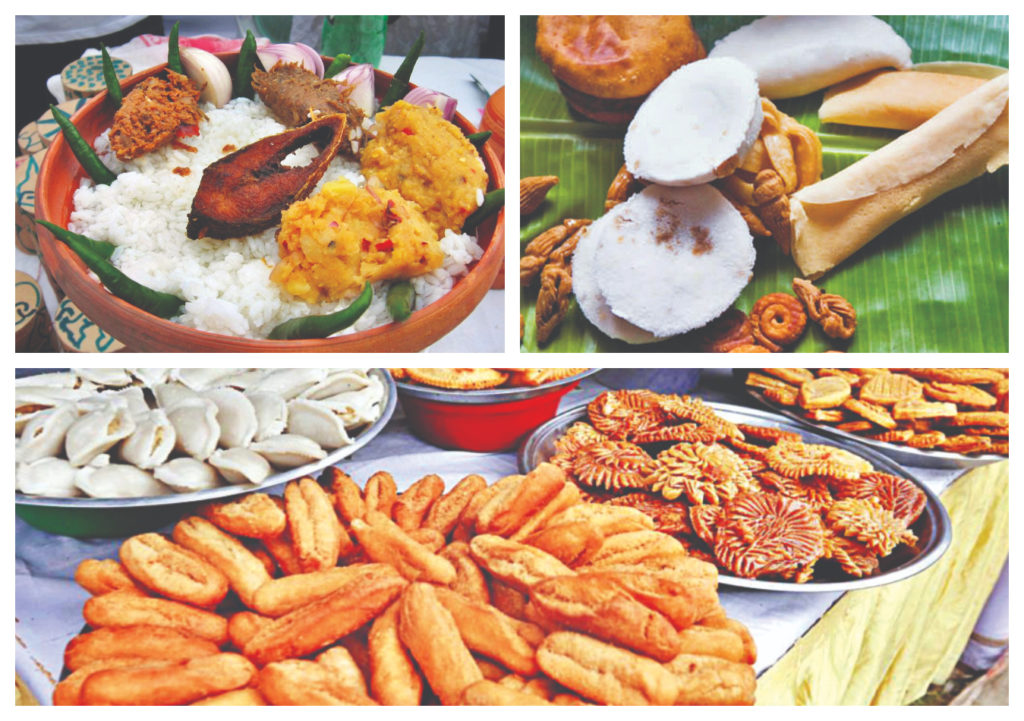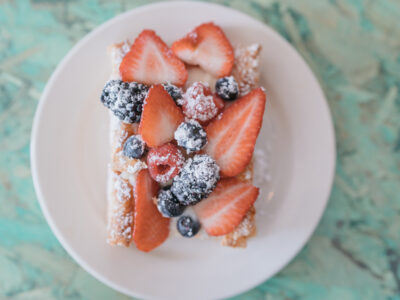Bangladeshi cuisine is a classic culinary art form of typical South Asian bold flavours. The food is ecstatic, quite similar and comfortable for the Indian palette with a few extra punches of optional spices.
There are Bangladeshi restaurants all over the world in top cities and they are quite popular. They are thronged not only by the South Asians but also by the natives many times just because of the rich delicacies and excellent tasteful items which make the culinary experiences memorable.
Most of the Bangladeshi dishes are based on rice. The abundance of fish in the rivers and ponds and the love of the people for different varieties of fish in many forms make the proverb ‘fish and rice make a Bengali’ more meaningful. Shorshe Ilish, a dish of smoked Hilsa with mustard-seed paste is considered the most significant and important dish in Bangladeshi cuisine.
Apart from that, a good range of curries made out of freshly picked vegetables, different kinds of meats and lentil soups are also on the typical Bangladeshi menu. Besides, Bhorta, mashed boiled vegetables such as potato, beans, papaya and lentils, seasoned with onion, chilli, mustard oil/ ghee, and other pungent spices, is also a Bangladesh speciality.
“Most guests limit their understanding of Bangladeshi culinary scene to Mughal-inspired cuisines and Panta Ilish (fermented rice and Hilsa), both of which are popular within the capital of Dhaka and, therefore, accessible. At our hotel we are introducing a food festival especially for the foreign guests through which we are bringing delicacies from across Bangladesh, delving deeper into the inner food culture of each division of the country, preparing the food with only locally sourced ingredients to ensure that our guests enjoy the most authentic gastronomic experience,” says Shahid Hamid, executive director of Dhaka Regency Hotel & Resort, a five star hotel in the capital.
Besides the regular dishes, some dishes are specially designed to spice up celebrations and festivals. Biriyani or Pulao served with meat curries (chicken, beef or lamb) seasoned with proper spices and ghee or butter renders the celebration a heavenly smell and a satisfied tummy.
“Food represents the uniqueness of cultural identity for a nation. Bengali food bears the rich tradition of our taste and art. Since time immemorial, food culture in this land is developed with the crops’ variation and craftsmanship of our people. Our food has already reached across the globe with much reputation because of its taste and aesthetics values,” comments Mohiuddin Helal, the managing director of CBT Bangladesh, a leading organisation that works on community-based tourism.
Indians would find a special connection with Bangladeshi food in three different ways. Every item has two ways of cooking and Bengalis from both sides of the border simply love to chat over the different style of cooking of the same item and how different it tastes on both sides of the border. But there are still a few items like Bhorta of Shutki, a fish, which is a typical signature dish of Bangladesh.
Food has also begun to be identified with aspects outside the kitchen, notably the favourite sport of Bengalis, football. It is interesting to note that while the East Bengal Football Club is identified with Ilish (hilsa), the Mohun Bagan Football Club is identified with Chingri (prawn). Even the non-Bengali Indians would find a lot of similarity in many Bangladeshi items with Mughlai style of cooking like Pulao, Kachchi Biriyani and many dishes made of either chicken or mutton.
The vegetarians will also have a handful of options. Often, Bengali vegetarian dishes are cooked without using onion and garlic, hence making it convenient for Jains as well. There is no dearth of vegetarian option in any Bengali food culture. “A steady number of Indians today are waking up to the wonders of a Kala Bhuna or the tasty Bhorta. The beauty of Bangladeshi food lies in the familiarity of the ingredients that are very easy for the Indians to identify when they taste it, but the je ne sais quoi (I don’t know what) that’s difficult for them to put a finger on. It is the innovative way with the same ingredients the food is cooked with that makes all the difference,” says Poorna Banerjee, a leading food blogger of India.
The desserts are a different story altogether. The entire Bengal delta is known for its passion for a wide variety of sweets made from cow milk. Roshogollah, Kalojam, Sondesh, Mishti Doi, Shemai, Cham Cham… the list is way too long! Although Pitha (kind of pancake) is meant to be especially eaten during winter, it is always prepared and cherished in any Bangladeshi dinner table all over the year.
Most Pithas are sweet majorly made of flour, sugarcane, date juice, rice, wheat, milk and coconut but that does not stop the Bengalis from making it spicy. There are some Pithas, which are made with meat and other spices. The variety of spinoffs from Pithas like Bhapa Puli, Patishapta and Nakshipitha are commonly made at ease and celebrated in any Bangladeshi kitchen.
“The guests must enjoy items such as Biriyani cooked inside Bamboo Stalks, Choijhal Gosht, Shatkora Chicken, Koi Paturi, as well as vegetarian items such as Dal with Drumstick Shoots, Bamboo Shoot Curry, Lau Khatta and Shabji Labra. Even for desserts, we are introducing unique and lesser-known dishes focusing especially on winter cakes like Pitha,” says Hamid.
The more you roam around the alleys of any Bangladeshi town, the more exotic your culinary experience will become. Food found in the streets and restaurants is as traditional as the food cooked at home. Street food is also equally interesting and a must try! Iftar at the old Dhaka streets, Jhal Muri (puffed rice with spices), Dal Puri, smoking hot kebabs are never to be missed.
“We are known for our warm hospitality and our people’s generous behaviour and great food. Our food is delightful; full of vegetarian and non-vegetarian varieties – a pure South Asian delicacy. The spectacular combination of our age-old traditional cooking style and a diverse range of perfectly blended spices give Bangladeshi cuisine a unique taste for which people from all over the world return to us. India and Bangladesh have a shared history and shared heritage and food is a big part of that, we have just evolved it in our way and developed our style which still shares the same root. And that is why Indians adore Bangladeshi food in all forms,” says Bhubon Chandra Biswas, chief executive officer of Bangladesh Tourism Board.























